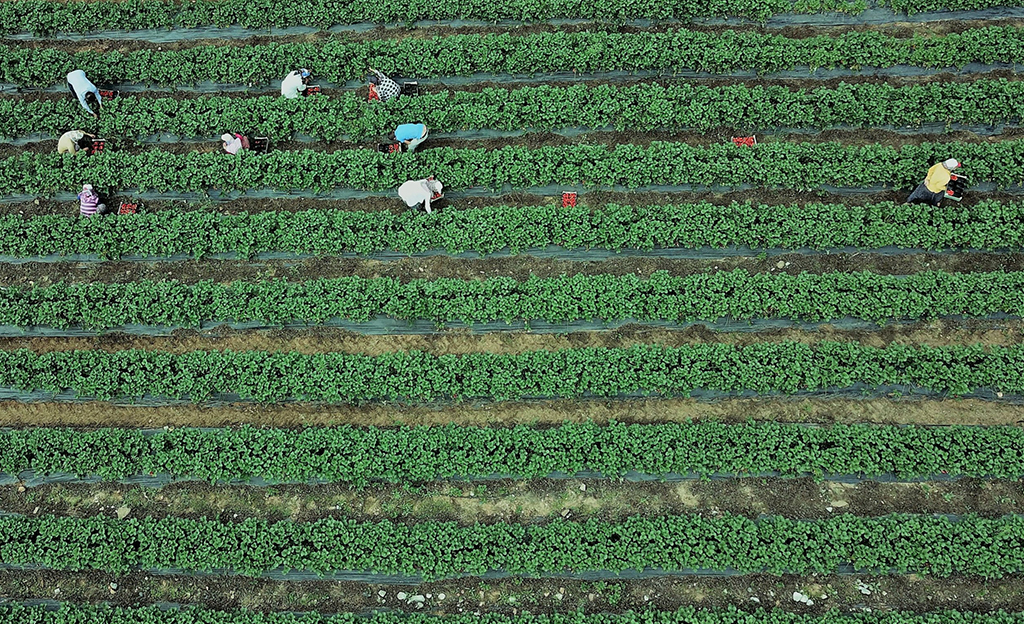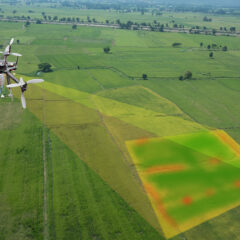AgriTech Startups- The updated farming marketplace!

Today’s farmers face many challenges to sustain their livelihood through farming with age-old farming traditions. Malpractices in the unorganized agricultural markets, unreliable climate changes, water scarcity, price hikes are becoming a primary concern for Indian farmers. With the absence of organized marketing systems for production, they have started to adapt to technology and have thus given a space for AgriTech to nurture itself.
The AgriTech penetration in the Indian market is ~1%, and the potential calculated is USD 24.1 Billion. This growth results from the adoption of digitally enabled agri-products and the surging use of technology for activities like the distribution of seeds through IoT, spraying through drones or selling fertilizers through prioritization techniques. With more than 1000+ startups working within different domains of the Agritech business, young entrepreneurs are shaping the landscape of the new agriculture sector. Technology has seeped into agriculture and has created segments like Agri finance, traceability, precision farming, and farm management.
In the wake of the pandemic, all industry sectors, including agri-tech, were compelled to innovate and find quick solutions to cope with the uncertainties caused by lockdowns. Due to various technological advancements, the Agri industry in India is once again undergoing irreversible change. Technological inventions and advances ease the burden on the farmers through accurate weather forecasting, IoT devices for prediction of soil moistures, the chemical used, etc., and give them maximized profits in terms of better yield and productivity. But there are some core domains or segments in the Agritech business which are focusing on the challenges faced by the farmers and coming up with innovative solutions to help out farmers. To understand the essence of Agritech, let’s explore various segments of Agritech’s business:
- Market Linkage:
The procurements and distribution process are complex and somewhat ineffective in the agriculture sector. Therefore, the farmers usually buy expensive resources like pesticides, fertilizers, machinery, seeds, etc., for their crops due to a lack of awareness of prices and the market difference. Likewise, while selling their final product, the farmers get a much lower price for their products, making it hard for them to survive. Thus, to solve the discrepancy w.r.t the input resources and output produce prices, Agritech firms try to bridge the producer and distributor/retailer gap.
Farmers will benefit from this bridge in the form of better procurement and selling prices, in-time prediction of demand area and supply opportunities, and gaining traders’ trust for better supply chain interdependence.
| Knowledge box Farm to Fork is an attempt being undertaken by numerous Agritech startups which enables the farmers to directly connect with a retailer and get the best price for their produce along with managing their quality of produce. |
- Farm Management or Precision Farming:
Managing farms is not an easy task; from recalling the date of sowing to keeping in check the amount of fertilizer, every minute detail is to be remembered. These details are efficient in estimating the profit-loss ratio and understanding a farmer’s yield estimate.
Now, you must be wondering where does Agritech comes into play, right?
Just imagine purchasing a property without getting the prior information about the owner, registration, area estimate, and other aspects. Such purchases and decisions can be called uninformed decisions and might lead to losses or inaccurate risk estimation. Likewise, imagine getting data and analysis based on historical & present information acquired from the farmer for their land. Do you think you’ll be able to make an informed decision to purchase crop produce from that specific farmer? The answer is YES!
Hence, we can conclude that precision farming benefits making informed decisions and managing the farms’ w.r.t crop health, acreage, etc.
- Traceability:
Consumers have become more conscious of food supplies and how food is produced, whether it’s organic or minimally processed, in recent years. Also, through traceability, farmers can track the product and get better remuneration for their legitimate products by having the supply chain visibility. Food traceability systems cover all the aspects of production from distribution, transport to retail and meet the expectations of the end-users. With a more significant opportunity to grow and evolve, the traceability segment brings premium products to the market and manages the supply chains.
- Agri-Finance:
The finance system in the agricultural sector is said to be unstable and unorganized since formal systems like banks do not have any assurance whether the farmer would be able to pay back the loans sanctioned to them. Unlike the population of other sectors, farmers have no salary accounts or CIBIL scores, and therefore only 30% of farmers can get loans at higher interest rates. The Agritech-startups are working rigorously to develop a database with farmer’s details and farms’ specifics which can help estimate whether the farmer’s crop yield will be good enough for him to pay back the loan.
Now that we know agriculture and technology are the amalgamation farmers need. The primary focus of these startups would be building artificial intelligence and machine learning-oriented solutions to enable staging data-driven analysis based on crop health, weather forecast, satellite imagery, and geospatial mapping. These solutions will enhance the yield and quality of the crops and help reduce stress for the farmer regarding their crops.
We can also see the government in action with new policies and focus on adapting technology in the agricultural sectors. The government has also been proactively implementing and introducing schemes for farmers to adapt to advanced technology to boost the agriculture ecosystem further. Some of these schemes in brief:
- National e-Governance Plan in Agriculture (NeGPA): initially launched in just seven states, this scheme is focused on the use of information and communication for early access to farmers with information like advisories, pests, disease control, etc. At present, there are many web and mobile applications like Agri market, Pushpa Krishi, etc., that are actively assisting the farmers.
- Pradhan Mantri Krishi Sinchayee Yojana (PMKSY): Thewater irrigation scheme aims to enhance the on-farm watering systems, reduce wastage of water, and bring better water availability and other such initiatives.
- Agricultural Technology Management Agency (ATMA): was devised to bridge the gap between technology and farming practices. It motivates the farmers and stakeholders to become a part of the technology drive and adopt the various solutions developed using technology.
- Pradhan Mantri Fasal Bima Yojana (PMFBY): Initiated by PM Modi, it aims to provide insurance coverage to various farmers to get them a stabilized income in case of crop failure. Using techniques like Crop Cutting Experiments (CCE) estimates the yield produced of any crop and thus encourages the farmers to undertake innovative and advanced agriculture practices.
AgriTech startups have been coming up with innovative solutions to get the farmers better prices for their yield, crop acreage, solve the last-mile connectivity issues, track and monitor the growth and health of their crops. Companies like CropIn, Bijak, Agrostar, and many more are in a neck-to-neck competition. RMSI-Cropalytics has recently joined the initiative of solving many challenges farmers and other agriculture sectors face like crop outlook, crop acreage and yield estimation.
RMSI – Cropalytics is a SaaS-based AgriTech-startup that uses Satellite imagery, modeling, geocoding, and other advanced methodologies to analyze and predict weather forecast, crop health, stress due to rainfall, Nat-cat scores, etc. Our product PInCER™(Profile and Information of Crop Exposure and Risk) offers various modules as a solution. We launched the first of its kind live crop map for India. The new crop map shows the geo-location of sown acreage of the current cropping season in high resolution. RMSI Cropalytics makes the crop map actionable by overlaying useful data on it, including village boundaries, farm sizes, crop health, weather forecasts, yield estimates, and land ownership.
- Village Prioritization categorizes the villages as per your needs and will let you know where you can set up your sales and get better results in terms of yield, health, and procurements and,
- In-Season tracking will enable tracking of the stage-wise growth of a crop and help determine the in-time need for products like fertilizer.
- Farmer Decision Support System, mobile application captures field data from farmers and assists input companies in building robust last-mile two-way communication with farmers, pushing on-time crop-specific advisories & best practices to farmers.
- Field Management System, a portal for assigning territories to field extension team members and tracking their activities.
- Farmer Risk Profile Verification, this technology-based solution helps insurance companies to verify hundreds of thousands of crop insurance policies in a short time.
These modules are delivered to agriculture-related companies and farmers via mobile applications and web portals. It aims to help the farmers in the form of advisories, alerts, and notifications for stage-wise crop growth and related issues, crop acreage, yield estimation, pest and disease control, finance management, loan procurement, etc.
Stay tuned as we are about to study each domain of the AgriTech sector in upcoming blogs. So watch out for this space for more.
A note about the Author,
Rohit Basumatary working as Product Development Manager with RMSI-Croaplytics, has recently been intrigued with the Agritech sector. New to Agritech, Rohit has explored and researched this industry and has penned his thoughts and understanding in a blog.

